Content
Published:
This is an archived release.
Building applications soaring, processing time shortening
In 2015, municipalities processed 97 500 building applications. Adjusted for non-responses, this was a 4 percent reduction from 2014. During the same period, the average processing time decreased by 1.5 per cent. Gross operating expenses for application processing increased by 9 per cent.
| Unit | 2015 | Change in per cent | ||
|---|---|---|---|---|
| Change from last year | Change last 5 years | |||
| Corrected 7 July 2016. | ||||
| Excemptions for new buildings in agricultural areas, areas of natural environment and outdoor recreation areas | Number | 2 138 | -2 | 35 |
| Processing time for building applications | Calendar days | 40 | 5 | 14 |
| Gross operating expenses within land use planning in the municipalities | NOK per capita | 770 | -1 | 16 |
| Gross operating expenses in local and regional development, area and nature, county council districts | NOK per capita | 192 | 0 | 14 |
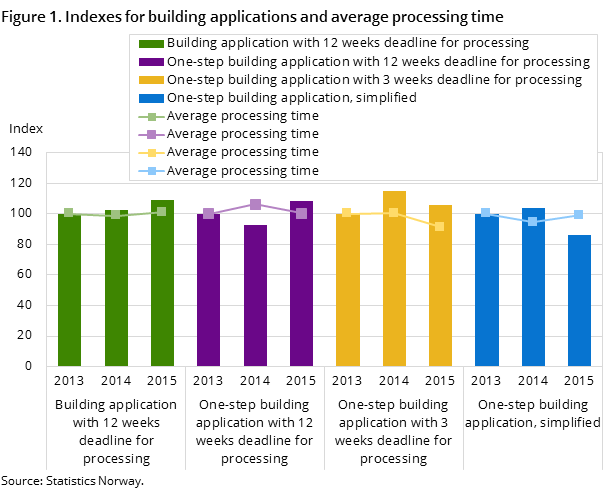
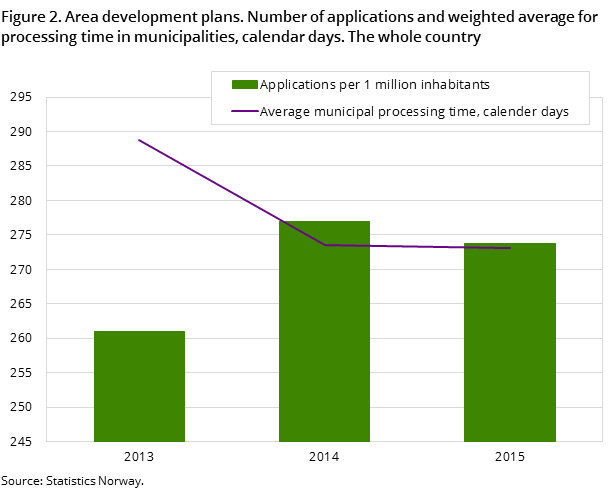
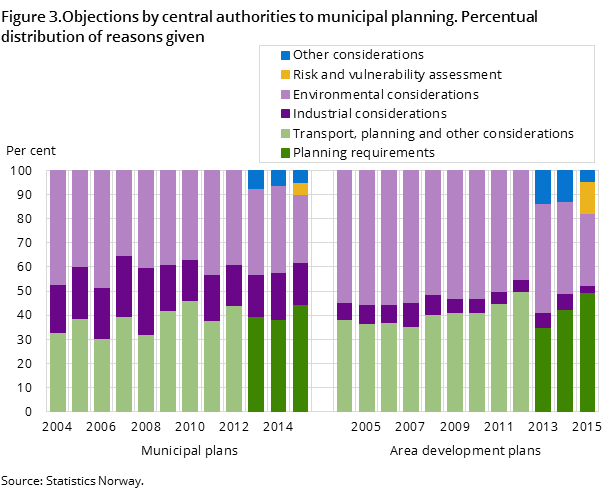
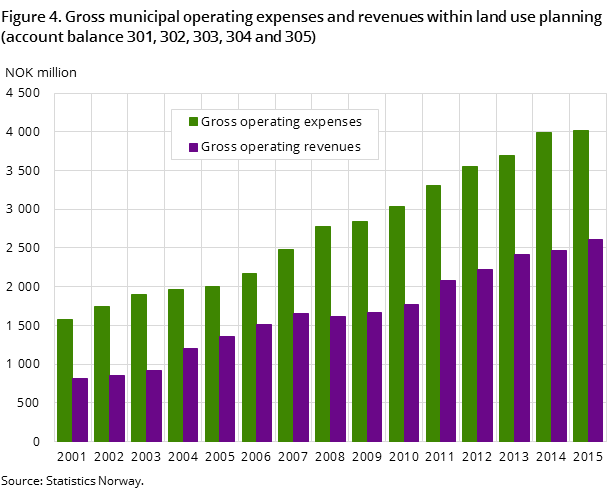
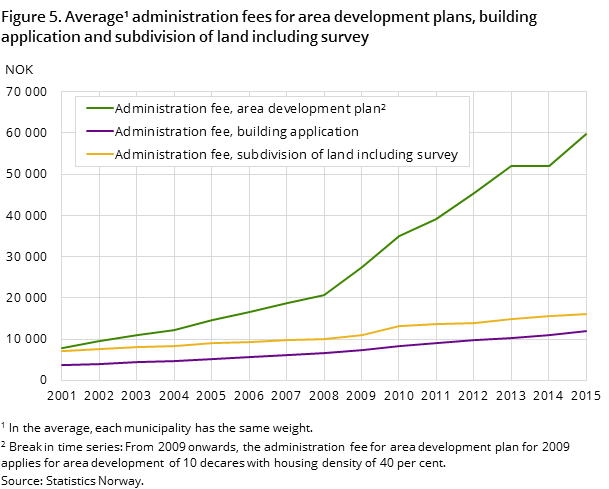
Mostly “simple” applications, gradually faster processing
One-step building applications with a 3-week processing deadline and one-step simplified building applications are the most common types of building applications, and these also have the shortest processing times. The processing time for these types of applications has seen a slight decline since 2013, by 9 and 1 per cent respectively. For the more complex types of applications with a 12-week deadline, the number of applications has increased by around 10 per cent since 2013, while the processing times are virtually unchanged, with changes of 1 per cent on average.
Longer processing than the statutory deadlines
Municipal reporting for 2015 shows that 4 out of 5 building applications were consistent with municipal plans. The number of applications for exemptions from municipal plans amounted to 17 900, or 19 per cent of all building applications. Furthermore, reporting shows that 7 200 applications were not processed within the statutory deadline. Some municipalities that receive many building applications have not reported any figures for the number of applications that have exceeded the deadline, while others have reported that they do not exceed the deadlines at all. This issue is most likely subject to underreporting to some extent.
Almost everyone gets approval
For 2015, the municipalities reported that 97 per cent of all building applications were granted. Some building applications applied to areas with specific restrictions, for example natural or cultural heritage values and universal design. Such building applications were also generally granted; in 2015 the share was 93 per cent.
Four per cent file complaints
For the first time, the reporting for 2015 included figures on complaints received, and 386 municipalities have reported on this. These municipalities processed 4 200 complaints about the processing and decisions on building matters. The municipalities spent an average of 65 calendar days, or just over two months, on the complaint process.
Objections to land use plans decreased
In 2015, a total of 700 objections to municipal plans and 850 objections to area development plans were filed by various authorities. Compared with 2014, there was a decrease of 15 per cent for objections to municipal plans, and an increase of 10 per cent for objections to area development plans. The most frequent objections relate to planning requirements and environmental concerns. For municipal plans; planning requirements were the reason for 44 per cent of the objections, while for area development plans, environmental issues were behind 50 per cent of the objections. The Municipal-State-reporting system does not contain information on the results of these objections. The municipalities may either comply or negotiate with the objecting authority, or a final decision is taken by the Ministry of Local Government and Modernisation.
Fewer new buildings in areas for agriculture, nature and outdoor activities
In areas set aside for agriculture, nature and outdoor activities, 3 200 permits were granted for new buildings in compliance with the municipal plans, which was 850 fewer than the previous year. In addition, 2 140 dispensations were granted for new buildings in these kinds of areas, which is a decrease of 2 per cent. Dispensations for new buildings along waterways were given in 490 instances. For the coastal shore zone, the number of dispensations for new buildings in 2015 was 719.
Rising expenses and revenues in land use planning
In 2015, gross expenses for land use planning amounted to NOK 4 billion. The municipalities’ gross income covered NOK 2.6 billion of these expenses. From 2014, gross expenses rose by a mere 0.4 per cent, while the gross income increased by 5.6 per cent. Administration fees also continue to increase. The average fees for building applications and subdivision of land including survey increased last year by 9,2 and 3,6 per cent respectively.
Find more figures
Find detailed figures from Town and country planning in municipalities and county authorities
Contact
-
Ingeborg Hauge
E-mail: ingeborg.hauge@ssb.no
tel.: (+47) 95 87 66 56
-
Jørn Kristian Undelstvedt
E-mail: jorn.kristian.undelstvedt@ssb.no
tel.: (+47) 94 50 68 64
